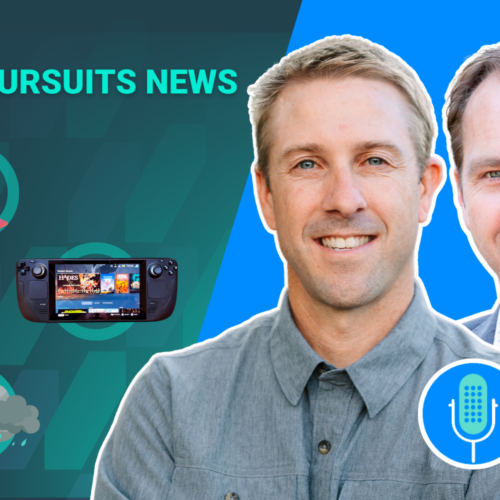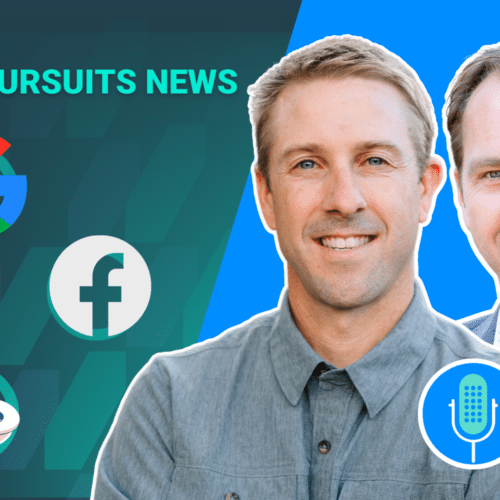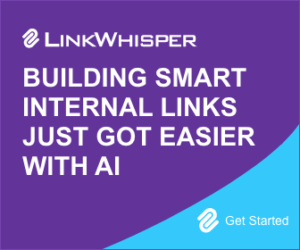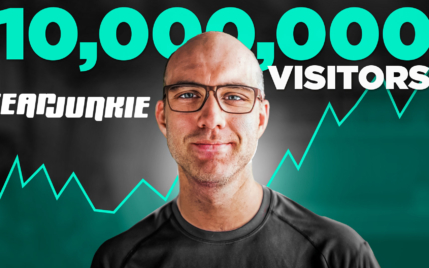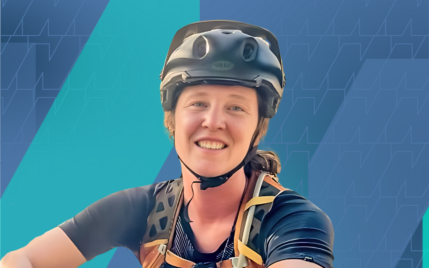How to Buy and Grow a Website 5x in Just 7 Months
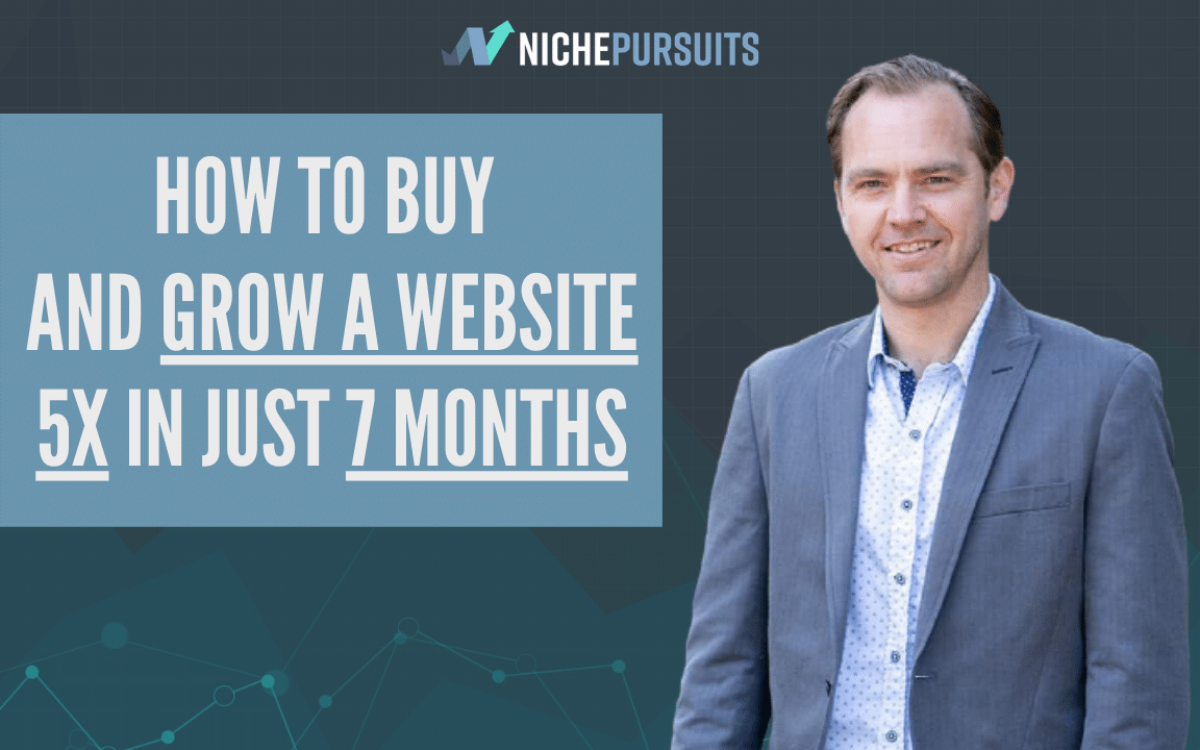
When you buy something through one of the links on our site, we may earn an affiliate commission.
Wondering how to grow a website after you've made a purchase? Well, today, I'm excited to share an interview I conducted with Jared Bauman, a long time Niche Pursuits reader.
Jared and I sat down to discuss a recent site he purchased on MotionInvest.com and how he grew it 5x in just 7 months. He took the site from earning around $200 a month to now over $1,000 a month! Below you will find all his exact strategies for success.
Jared was kind enough to offer to write up his strategies, and so I allowed him to do that below. You can listen to the entire interview by clicking the play button above, or by watching the video version below.
My name is Jared Bauman, and today I want to walk you through my process in buying my first existing website that's already earning money. I’m not a stranger to starting niche websites, as I’ve been doing it on the side for 3-4 years.
To be fair, I’m also no stranger to online marketing. For my “day job,” I run a digital marketing agency, so I have a good amount of experience with websites. I own a few other niche websites that I started from scratch (or virtually from scratch) that are making money. But, I’ve always been intrigued by the prospects of buying a site that already makes money.
This is the path I took to find a site for purchase and grow 5x in 7 months.
Update: I have since sold the site in the mid $40,000 range, or in other words a 5x return on investment!
Keep reading to find out how you can do the same.
Contents
Why Buy an Existing Website?
At first glance, buying an already-established website that is making money doesn’t make any sense at all. You can start a site for next to nothing. Provided you know a thing or two about SEO, you can publish informative, optimized content to the site and over time, grow it into a profitable asset.
However, this all takes time… a lot of it. Most websites sit in Google’s sandbox for 6+ months before seeing any traction. And even after that period, it can take 1-2 years for the site to earn measurable income. As an example, look at Spencer’s recent Niche Site 4 project.
Plus, your site might never take off and become profitable. There are no guarantees…
Buying a website eliminates all that. You shorten the time horizon to profitability while ensuring that the site you put time and money into is already earning money. But, the downside is that you’re paying for all of that work that someone else has done, and that time that it's taken to season the site.
One great approach is to buy a site that has a lot of growth potential. If you can find a site that is close to having a breakthrough, whether because it needs technical work, more content, or some link building, then you can quickly increase the value of the site you purchase.
That was the approach I wanted to take.
Website Purchase Criteria
There are no shortage of websites available to purchase, and it can be really easy to get overwhelmed at the number of options available. I quickly learned that I needed to have a set criteria for a website that I was going to purchase. This would allow me to weed out the majority of sites I saw, and feel confident in the one that I would end up buying.
I started by determining that the most I wanted to pay for a site was $12,000. Most sites sell for a multiple of 25x-35x monthly profit, so this meant I was looking for sites that were earning no more than $500 per month.
However, I’d be happy to pay less than $12,000 if I saw a website with good opportunity.
With price point out of the way, here is the additional criteria I settled on for the website I wanted to purchase. Obviously, yours might be a bit different.
1. Ranking Articles
The website had to have content with keywords that ranked on the first page of Google. The site didn’t need to have a ton of first page rankings, but it had to have a few.
According to an Ahrefs study, over 90% of content on the internet gets no traffic from Google.
There is a risk that a site will never get “Google love,” and no matter what you do, it will never get first page rankings. This could be due to a number of factors, but since I wasn’t a part of the building process from the beginning, it was a concern.
First page rankings would show me that Google liked the site (to some degree), and trusted it enough to put something from it on the first page.
2. Consistent Revenue
The website had to be earning money, and had to be doing so for several months. Many websites never reach this stage, and much of the reason I wanted to purchase a site (rather than start from scratch) was to get a site that was already earning money.
It's one thing for a site to rank on the first page for keywords, but an entirely different thing for it to be making money from its content. For this to happen, not only do the keywords have to rank, but they have to be keywords with buyer intent.
In addition, the articles need to have a compelling enough copy to create affiliate revenue conversions. Granted – having revenue doesn’t mean that the content is great. But, it is a good sign.
3. No Backlink Profile
You might think that getting a site with a built-out backlink profile would be a plus. And, if I was going for a site that was earning more money, I would agree. But, the nice thing about buying a site in this price range is that it's entirely possible to find a site that doesn’t have many (if any) backlinks.
I wanted to avoid spammy backlinks, over-optimized anchor text, and PBNs.
A site without much of a backlink profile means that it is ranking based on other factors, and that is a good sign. It also means that adding backlinks after purchase could help supercharge the rankings.
4. Monthly Traffic over 3,000 Pageviews
This goes hand-in-hand with the next criteria. A site that is getting consistent pageviews is a great sign. Once a site reaches several thousand pageviews each month, it is getting close to being eligible for a Premium Ad Network.
You could monetize with ads through Google Adsense, but the RPMs are terrible. With sites of mine in the past, I’ve gotten under $5 RPMs, which hardly makes it worth it.
But, premium ad networks make monetizing with ads worth it. I personally have sites on both Ezoic and Mediavine, and get consistent RPMs between $15-$30.
Ezoic has the lowest bar for entry, set at roughly 10,000 pageviews per month. Buying a site that has at least 3,000 pageviews per month puts it within striking distance of getting ad revenue.
5. No Premium Ad Network
I wanted a site that did not have any premium ads on it. Once I added premium ads, it's an instant source of additional revenue, and greatly increases the revenue of the site.
When buying real estate, they talk about “getting your money on the way in.” In essence, this refers to buying the property for less than it is worth, so you’ve basically made some money as soon as the deal closes.
While you can directly apply this to website purchases, adding a Premium Ad Network quickly is another way to do this. If you buy a site earning $200/month, and add premium ads in the first few months, you could very easily jump the revenue to $400-$450/month. You just doubled the value of the site.
So, those were my five criteria. I highly recommend you set a stringent criteria list for a website purchase, especially if this is your first one. This made it really easy to evaluate (and eliminate) websites that I saw for purchase. And, when I did buy a site, I was able to do it quickly and full of confidence.
Buying a Website
With these criteria in mind, I set out to find a good website for purchase.
Where to Buy Websites
There are also no shortage of places to buy websites. You can go through a broker, a Facebook group, or even find a site on your own. There are upsides and downsides to each, and lots of great articles about which to pick for your situation.
For my first purchase, I was looking for a site making less than $500 per month. In the grand scheme of things, I would be purchasing a pretty small site (as an example, Spencer bought a site making $10,000 per month in 2018)!
A smaller site would carry less risk for me. And, with success, I could reinvest the profits into a bigger site. For a site this size, you might be able to find one on Empire Flippers, but they are rare and go FAST!
Flippa has no shortage of sites in these criteria, but if you look closely, most of what is sold there is junk. Yes, you can find a good site, but you really have to know how to sift through the bad ones. I wasn’t confident enough in my skills, at least not for the first one.
I ended up purchasing a site through Motion Invest. Their sites are typically more in the range I was looking at, and had a layer of vetting that I appreciated. After several months of looking over sites that were published, I found one that met my criteria and pulled the trigger to purchase it.
Purchasing the Website
The site that I ended up purchasing was in a broad niche with a lot of affiliate websites. It wasn’t a niche that I had any particular expertise in, but I did find the topic interesting. There were lots of different products to write about, which was a good sign to me.
The site was making around $200 per month, and I purchased it for just over $7,000. The multiple was a little higher than I wanted, but the site met every single one of my criteria. Given that it had been several months of looking and I hadn’t seen one single site like that, I felt it was worth purchasing.
How to Grow a Purchased Site
Within minutes of wiring the money for the site purchase, I was already making plans for how to grow it. Here is the step-by-step process I went through.
1. Site Audit and Repairs
Immediately, I ran the site through Ahrefs Site Audit tool. This can take a few hours, but once the crawler is done, it spits out a report on all of the technical errors on the site.
For the most part, the errors on this site were pretty easy to fix. The bulk of the fixes that needed to be made were:
- 404 pages
- Redirect loops
- Missing meta descriptions and alt text
- Missing or multiple H1s
These tasks are pretty easy but very monotonous. They can easily be outsourced to a VA or a hire on Upwork if you want.
There were a few other technical issues, such as an incomplete Amazon Associates disclosure statement and a missing Privacy Policy page.
I also made some adjustments to the plugin stack in WordPress to reduce the number of plugins that were being used, and added Autoptimize to help with site speed.
Finally, the site’s architecture was poor, and so I re-categorized the posts and changed the navigational menu.
All of these changes were done within the first week. To be honest, these aren’t a lot of fun. But, sometimes you can see a lot of traffic gains just from fixing the technical details of a site. Beyond that, making these changes provided a better user experience and potentially helps avoid future ranking downturns.
2. Add Buy Buttons and Tables
One glaring problem I saw while working on the site was that none of the articles had tables or buy buttons to Amazon. While the articles had helpful content, the only links to Amazon were text links that seemed randomly placed.
Tables are a great way to showcase the product details to a reader and help them make an informed decision. Big buttons that stand out on the page naturally attract clicks to Amazon, which make you more money.
I added the AAWP plugin to the site and put tables and buy buttons on all of the monetized articles.
3. Keyword Research
As soon as I finished fixing the technical errors, I turned to keyword research for new content.
The site was severely lacking in Informational content. My hunch was that one quick way to increase site traffic was to publish some long tail, informational articles. These are typically easier to rank than monetized content and they would help round out the site.
Most of the keywords I found were low search volume questions. These long tail keywords are relatively easy to write content for.
I also found a good number of “best x for y” type of keywords. These articles would help round out the site’s monetization, as right now the site really only ranked for individual product reviews.
4. Hire a Writer
While doing keyword research, I posted a job offer on Upwork for a writer. I was looking for someone with previous experience in the niche. I also posted in a few Facebook groups, and ended up finding a few great candidates there.
With the writing SOPs from my agency, I tested several writers and found one that stood out as the best option.
With a writer hired, it was time to start cranking out content. New content would do several things:
- Informational content would help shape the site into more of an authority site and less of an affiliate site
- Informational content could rank quicker and help me get on a premium ad network faster
- Buying Guides would present new monetization opportunities in future months
5. Publish New Content
The writer started writing a mixture of Informational articles and Buying Guides. The informational articles were around 1,500 words, while the Buying Guides were typically around 2,500-4,000 words.
Here is the publishing scheduled we ended up with:
- Month One: 11 articles
- Month Two: 24 articles
- Month Three: 16 articles
- Month Four: 16 articles
- Month Five: 20 articles
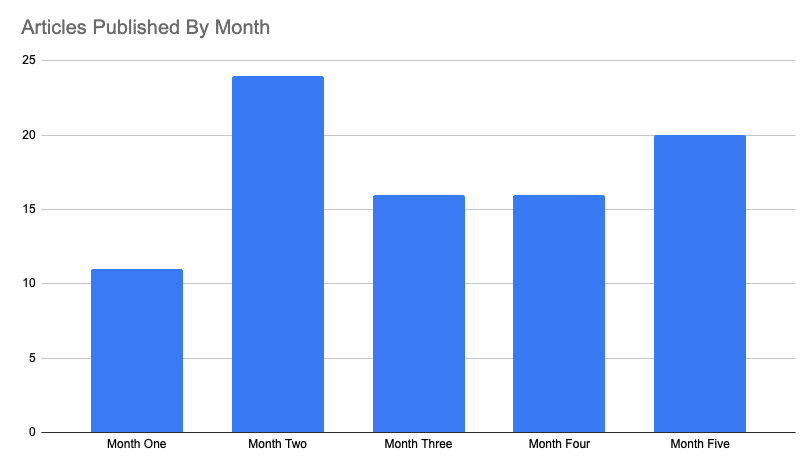
After five months of publishing content, I stopped publishing any new content. This is because I wanted to see what ended up ranking, before I decided what to write next.
6. Build Links
As I mentioned above, the site didn’t really have any links when I purchased it. Sure, it had a few random links it had picked up along the way, but nothing that was really moving the needed.
I took a very basic approach to link building, focusing on links that pointed to the home page of the site, with very basic branded anchor text.
I pursued websites that had linked to my competitors. I would scan their website and try to find some sort of connection that I could make with them. I would then email them, trying to strike up a relationship to see if I could guest post.
Luckily, I found lots of doppelganger competitors in this niche, and so I had a good number of link building targets.
The success rate for this process wasn’t very high (2-4% conversion rate). I know it could have been higher if I spent more time on the individual emails. But, I also only wanted 2-3 links per month, so I knew I didn’t need to be razor sharp focused.
After six months, I had been able to build around 17 links to the site, with the majority going to the home page, but also some to inner pages.
7. Add Internal Links
One gap the site had when I acquired it was a lack of internal linking. I could have tackled this right away, but I chose to wait until I had some more content on the site.
Once content started to get published routinely, I started going back and adding internal links. The informational articles were really good for linking out to relevant buying guides and reviews.
Link Whisper makes this task extremely easy, and it didn’t take me too long to add a lot of relevant internal links. I’ll admit – I was a beta tester for Link Whisper, so I’m quite partial to how amazing the tool is.
Internal linking helped Google crawl the site better, while also providing key links to internal pages, especially some of the buying guides that I was having published.
Results
Traffic and revenue results started to pour in after the first month.
Traffic
Traffic to the site started growing immediately, perhaps buoyed by the technical repairs done right away, along with a few backlinks during the first month.
New content was getting published to the site within 2 weeks of purchase, so that sustained and increased the traffic gains in coming months.
- Traffic at Purchase: 6,100 pageviews over past 30 days
- Month One: 7,100 pageviews
- Month Two: 8,500 pageviews
- Month Three: 9,900 pageviews
- Month Four: 15,100 pageviews
- Month Five: 15,900 pageviews
- Month Six: 16,600 pageviews
- Month Seven: 22,100 pageviews
The site is currently on pace for roughly 27,500 pageviews in Month Eight.

The combination of technical fixes, new content, and backlinks seem to have provided for several spikes in site traffic.
Revenue
The site had been valued at roughly $200/month, which is what it had averaged over the past 6 months. For clarity, the site earned $296 the month right before I purchased it, but that included some revenue from the Q4 holiday period.
- Revenue at Purchase: Roughly $200/month on a trailing 6 month average
- Month One: $274
- Month Two: $609
- Month Three: $978
- Month Four: $775
- Month Five: $556
- Month Six: $775
- Month Seven: $1,149
The site’s revenue has dipped a little bit in Month Eight, as we get closer to the Q4 sales season.
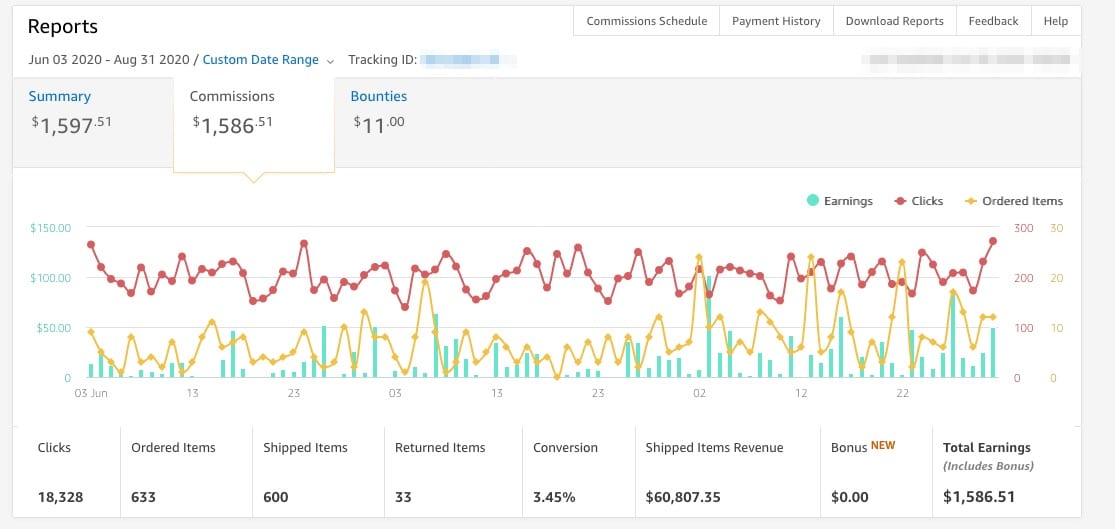
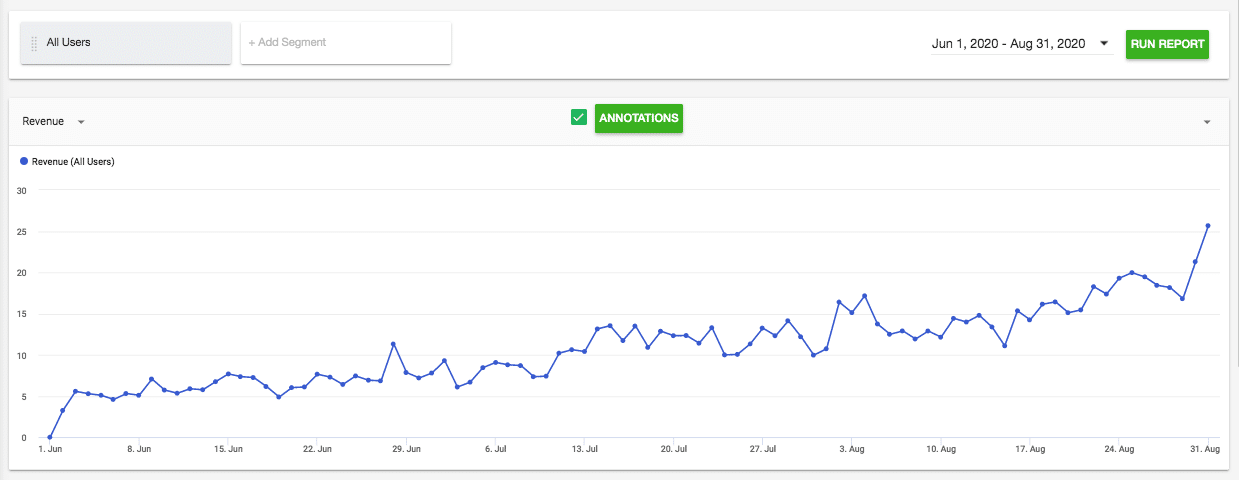
The site’s revenue benefited from a number of things:
- Adding AAWP and cleaning up the site’s content had an immediate impact on conversions
- Ezoic was added quickly, leading to several hundred dollars of additional revenue every month
- The global pandemic led to a temporary spike in revenue for this niche. This only lasted a few weeks but provided for a nice bump
- There was a seasonal lull during Month Five, but this had been anticipated using Google Trends
Value
If we use a 32x monthly multiplier, then you could value the site at $32,768. I think 32x is a reasonable multiplier, as that site has lots of potential upside. Granted – the site will need to earn this kind of revenue for close to 6 months to get a valuation like that. But, it still represents a nice estimate as to where the site is at given current earnings.
Since purchase, the site has brought in $5,116 in profit. The vast majority of expenses have gone to new content, totaling $4,126*. This leaves $990 in profit after expenses from monthly earnings.
Taking the current valuation of $32,768 plus monthly profits of $990 and subtracting the purchase price of roughly $7,000, the website has currently added $26,758 in profit since purchase. Not bad for 7 months!
*This does not take into account using team members at my agency for outreach and some of the technical work. There is obviously a cost associated with this, but since they worked on it sporadically when they had time, I didn’t have great metrics on it to share.
Future
My original goal was to get the site to $1,000 per month in profit, which would represent roughly 4x growth. In about seven months, the site has grown more than that and currently sits at a 4.75x growth multiple.
While I’ve reached my goal, I think the site still has a lot of potential growth. Many of the articles and buying guides published are only starting to get traffic, and many are sitting on page two and three of Google.
The next few months also brings Q4, which is historically the biggest quarter of sales for most Amazon Affiliate sites. Using Google Trends, I was able to see that this site performs really well on Black Friday and throughout December.
I do plan on selling the site, but my new plan is to wait until after November and December to see how the site performs. With any luck, I can get the earnings higher and increase the final sale price.
Want to learn step-by-step how I built my Niche Site Empire up to a full-time income?
Yes! I Love to Learn
Learn How I Built My Niche Site Empire to a Full-time Income
- How to Pick the Right Keywords at the START, and avoid the losers
- How to Scale and Outsource 90% of the Work, Allowing Your Empire to GROW Without You
- How to Build a Site That Gets REAL TRAFFIC FROM GOOGLE (every. single. day.)
- Subscribe to the Niche Pursuits Newsletter delivered with value 3X per week
My top recommendations

